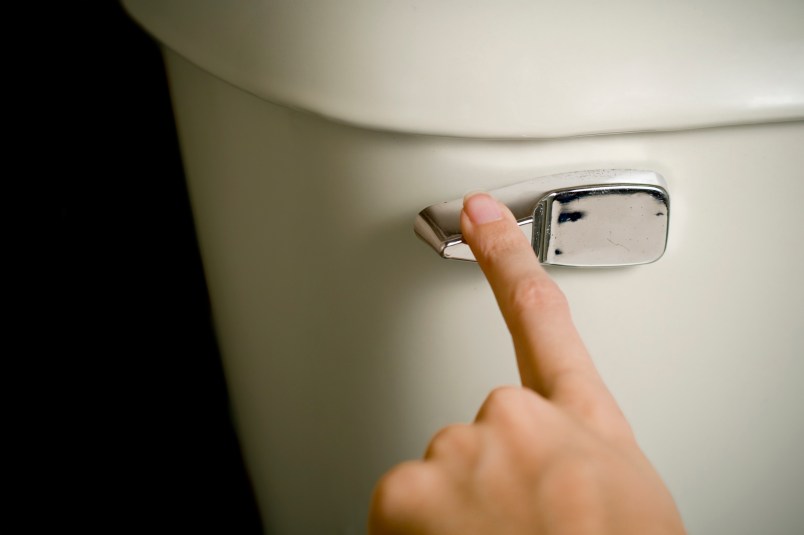Do You Save Money by Not Flushing the Toilet?

For those who were raised hearing the mantra, “If it’s yellow, let it mellow; if it’s brown, flush it down,” it’s no big deal to let urine sit in the toilet. But for others whose families didn’t abide by this rule, the concept may be off-putting. And is there even a point? Does not flushing the toilet save money in the long run?
The answer, of course, depends on where you live and the price of water in your area. Take, for example, my mom, who lives in Florida and is currently paying roughly eight-tenths of a cent per gallon of water. The government mandated in 1994 that new toilets could use a maximum of 1.6 gallons of water per flush (GPF); however, older, less efficient toilets may need quadruple the amount of water per flush. Given that the average person flushes the toilet roughly five times per day, according to the Water Research Foundation, that could lead to a lot of wasted water — and a jacked up water bill.
If you flush after every trip to the toilet, the math would go like this: 1.6 GPF (assuming your toilet wasn’t made before 1994) multiplied by five flushes per day equals eight gallons of water used per day, just for flushing. In a year, you’d flush the toilet 1,825 times (five flushes per day multiplied by 365 days in a year). Now, multiply those 1,825 flushes per year by 1.6 GPF and you get 2,920 gallons of water used per year on flushes. Factor in the cost of eight-tenths of a cent per gallon, and you’re looking at $23.36 per year just for flushing the toilet — for just one person.
Of course, there’s no general rule for how often someone should go number two, but let’s say there are 1.5 “brown” flushes per day. Given that you only flush 1.5 times per day, you’d use 2.4 gallons of water. In a year, you will flush the toilet 547.5 times (1.5 flushes per day multiplied by 365 days in a year). Next, multiply those 547.5 flushes by the 1.6 GPF and you get 876 gallons of water used per year on flushes. At eight-tenths of a cent per gallon, you’d spend $7.01 each year on water to flush the toilet.
Therefore, someone like my mom could save $16.35 each year by not flushing the toilet after every pee — and that’s just for one person. If my dad were to follow the same rule of fewer flushes, they could save $32.70 per year. Though that might not seem like a lot of money, they’d also be helping out the environment by reducing water waste. Plus, depending on how big your family is (and, as previously stated, the price of water in your area), you could save a lot more.
There are obvious downsides, however, to letting urine sit in the toilet for extended periods of time. First is the smell; that biting ammonia odor may turn your bathroom into an uninviting human litter box. You and your husband may go nose-blind to the scent, but your guests won’t — trust us. Plus, letting urine sit can cause toilet stains, and you’ll need extra water (and a whole lot of elbow grease) to scrub them out.
The amount of money you’ll save by not flushing the toilet will obviously vary depending on your family’s habits and the water prices near you, but saving even a few dollars is nothing to sneeze at. Ultimately, it’s up to you to decide where your priorities lie. To flush or not to flush: That is the question!
More From FIRST
Does Turning Down the Thermostat Really Save Money?
If You Saved Your Old Cell Phones, A Lot of Money Could Be Coming Your Way
Your Beloved Vintage Pyrex Pieces Could Now Be Worth Thousands












